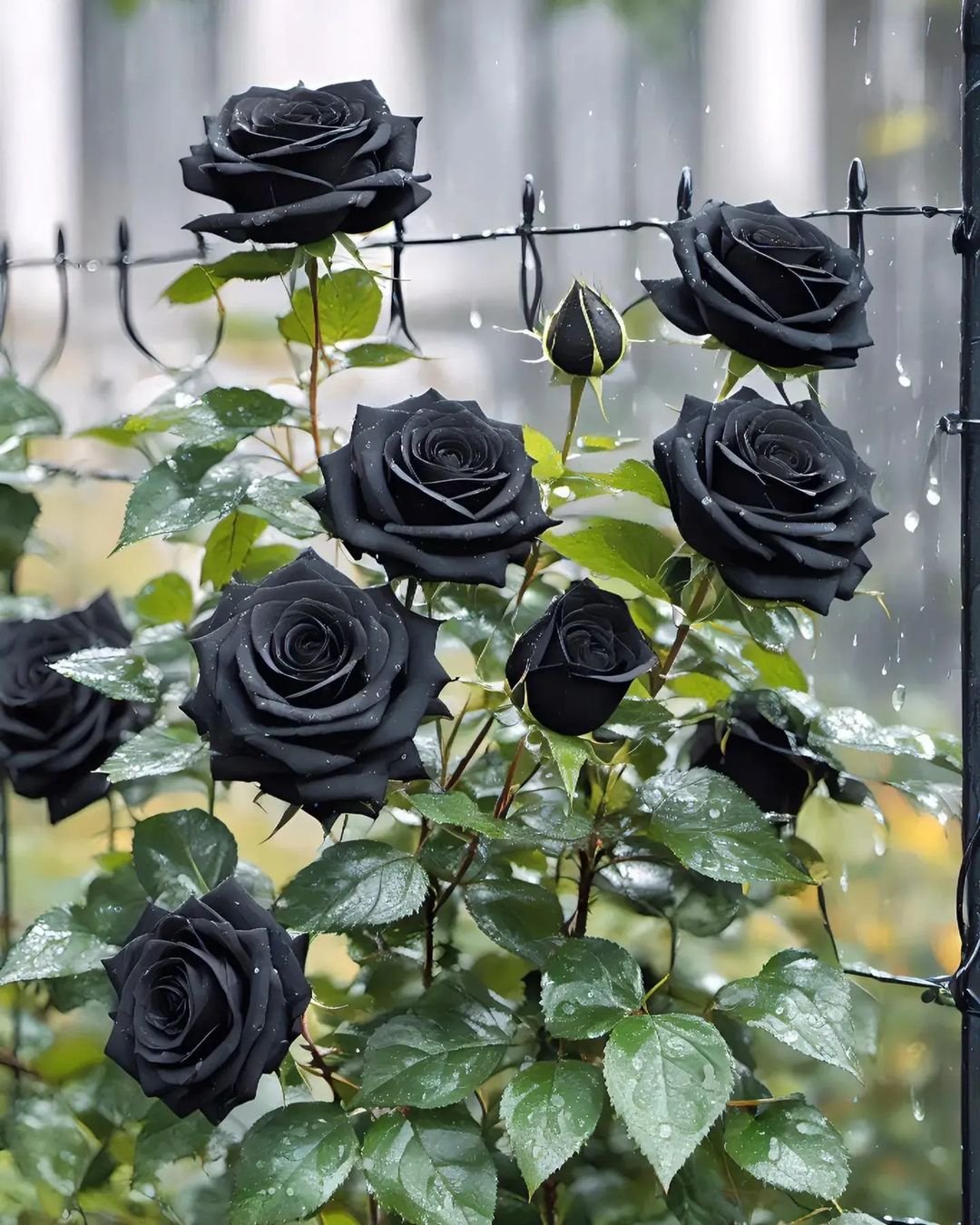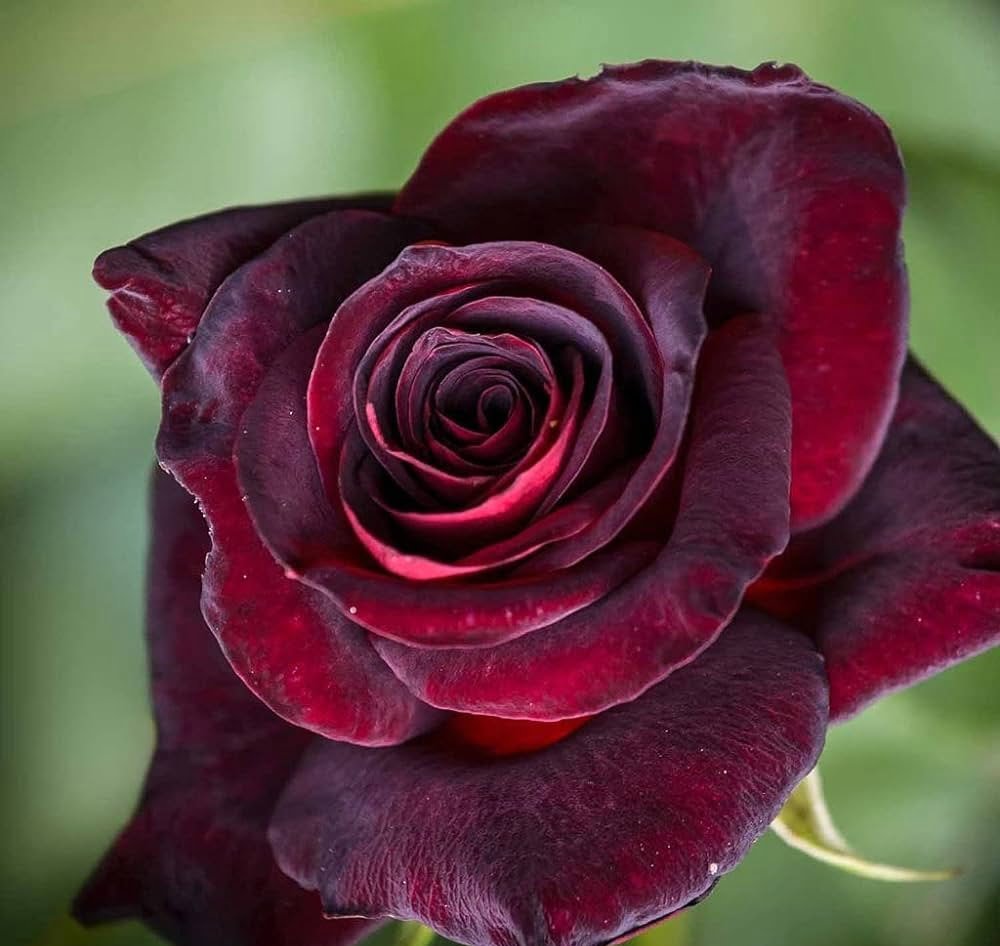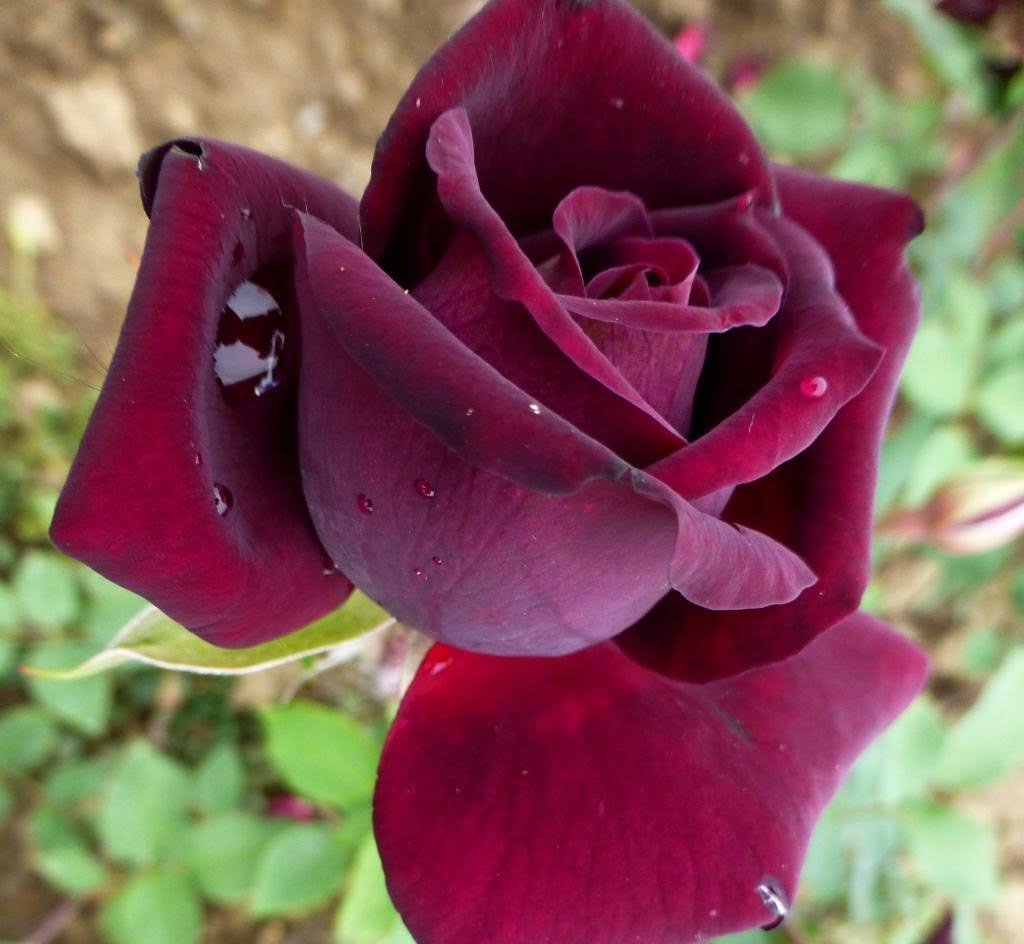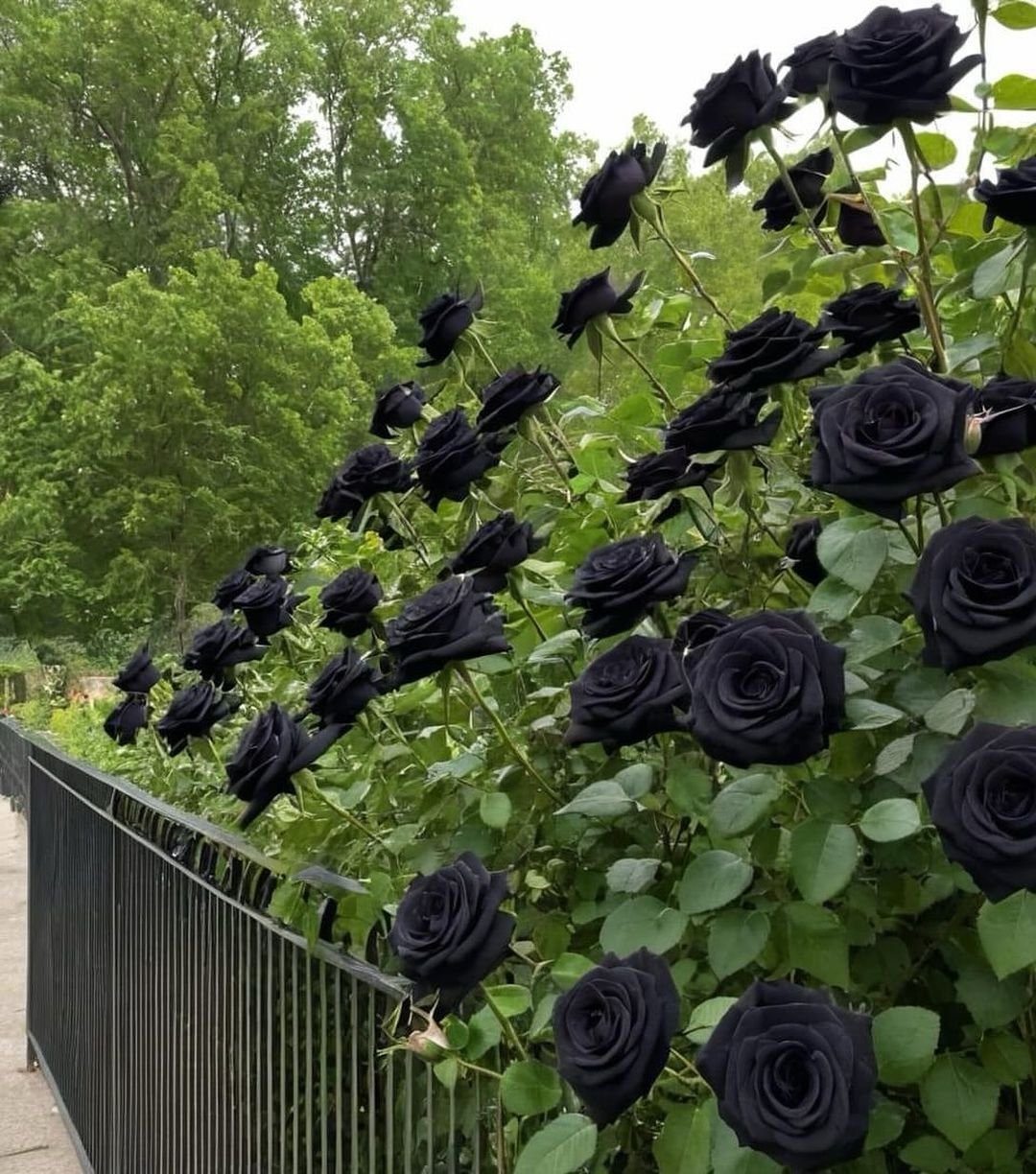Explore the captivating world of Black Roses, unraveling their rich history, symbolic meanings, cultivation techniques, and a diverse array of Gothic-hued varieties that will leave you spellbound.
Black Roses, the quintessential symbols of love and beauty, come in a kaleidoscope of colors, each hue carrying its own unique significance. Among this vibrant tapestry, the black rose stands out as a mesmerizing enigma, shrouded in mystery and intrigue. This guide delves into the fascinating history, symbolism, cultivation, and varieties of these dark, velvety blooms, unveiling the allure that has captivated romantics, artists, and horticulturists alike.
The Dark Beginnings: A Historical Journey

The origins of the black rose can be traced back centuries, intertwined with folklore, mythology, and the relentless pursuit of horticultural innovation. Ancient civilizations revered these elusive blooms, associating them with mysticism, power, and even the underworld.
In the Victorian era, the obsession with black roses reached new heights, fueled by the Gothic romanticism movement. Writers and poets wove tales of forbidden love, tragedy, and the macabre, often using the black rose as a symbolic representation of these themes.
The Quest for Cultivation

While nature has gifted us with numerous shades of roses, true black varieties have remained an elusive goal for generations of breeders and horticulturists. Through painstaking efforts and cross-pollination techniques, they have managed to create roses that come remarkably close to the coveted black hue.
Cultivating black roses is a delicate and meticulous process, requiring specific soil conditions, temperature controls, and expert pruning techniques. Growers must overcome challenges such as fading colors, disease resistance, and achieving the desired depth of pigmentation.
The Art of Rose Breeding

Rose breeders have employed various strategies to develop black rose varieties, including crossing dark-hued species with lighter-colored counterparts. The introduction of new genetic material and selective breeding over multiple generations have led to the creation of breathtakingly dark roses.
One technique involves manipulating the pH levels of the soil, as roses tend to produce darker blooms in more acidic environments. Additionally, advanced hybridization methods and genetic engineering have opened up new possibilities for developing truly black rose varieties.
Symbolic Meanings and Interpretations

Throughout history, the black rose has been imbued with a rich tapestry of symbolic meanings, ranging from the profound to the ominous. In many cultures, it represents mystery, rebirth, and the cycle of life and death.
In the language of flowers, the black rose symbolizes farewell, mourning, and the end of a relationship or life cycle. It has also been associated with Renaissance themes of obsession, darkness, and the forbidden.
Contemporary interpretations have embraced the black rose as a representation of strength, rebellion, and the unconventional – a bold statement against societal norms and expectations.
Varieties of Black Roses
While the pursuit of a truly black rose continues, horticulturists have succeeded in creating a diverse array of Gothic-hued varieties that captivate with their velvety petals and mysterious allure. Here are some notable examples:
1. Black Baccara

Here’s a short information chart for Black Baccara (Black Rose):
| Attribute | Information |
|---|---|
| Botanical Name | Rosa ‘Black Baccara’ |
| Plant Type | Deciduous shrub (Hybrid Tea Rose) |
| Soil Type | Well-drained, rich, loamy soil |
| Zones | 6-9 (USDA Hardiness Zones) |
| Exposure | Full sun |
| Bloom Time | Summer to fall |
| Height/Spread | 3-4 feet tall / 2-3 feet wide |
This hybrid tea rose boasts deep, velvety crimson petals that appear almost black, especially when fully bloomed. Its intoxicating fragrance and lush foliage make it a sought-after variety.
2. Black Jade

Here’s a short information chart for Black Jade (Black Rose):
| Attribute | Information |
|---|---|
| Botanical Name | Rosa ‘Black Jade’ |
| Plant Type | Deciduous shrub (Miniature Rose) |
| Soil Type | Well-drained, rich, loamy soil |
| Zones | 6-9 (USDA Hardiness Zones) |
| Exposure | Full sun |
| Bloom Time | Spring to fall |
| Height/Spread | 1-2 feet tall / 1-2 feet wide |
A captivating Floribunda rose, Black Jade showcases rich, blackish-burgundy blooms with a velvety finish. Its disease resistance and prolific blooming nature make it a popular choice for gardens and landscapes.
3. Black Magic

Here’s a short information chart for Black Magic (Black Rose):
| Attribute | Information |
|---|---|
| Botanical Name | Rosa ‘Black Magic’ |
| Plant Type | Deciduous shrub (Hybrid Tea Rose) |
| Soil Type | Well-drained, rich, loamy soil |
| Zones | 5-9 (USDA Hardiness Zones) |
| Exposure | Full sun |
| Bloom Time | Summer to fall |
| Height/Spread | 3-5 feet tall / 2-3 feet wide |
A truly bewitching rose, Black Magic features deep, reddish-black petals with a subtle shimmer. Its striking appearance and strong fragrance have made it a beloved variety among rose enthusiasts.
4. Nigrette

Here’s a short information chart for Nigrette (Black Rose):
| Attribute | Information |
|---|---|
| Botanical Name | Rosa ‘Nigrette’ |
| Plant Type | Deciduous shrub (Hybrid Tea Rose) |
| Soil Type | Well-drained, rich, loamy soil |
| Zones | 6-9 (USDA Hardiness Zones) |
| Exposure | Full sun |
| Bloom Time | Summer to fall |
| Height/Spread | 2-3 feet tall / 2-3 feet wide |
One of the closest approximations to a true black rose, Nigrette boasts deep, velvety blooms that appear almost black, especially in cooler temperatures or shaded areas.
Cultivating Black Roses: Tips and Techniques

Growing black roses requires patience, dedication, and a thorough understanding of their unique needs. Here are some tips and techniques to help cultivate these Gothic beauties:
- Soil Preparation: Black roses thrive in well-draining, slightly acidic soil with a pH range of 6.0 to 6.5. Incorporate organic matter, such as compost or peat moss, to improve soil structure and acidity.
- Sunlight and Temperature: While roses generally prefer full sun, black varieties may benefit from partial shade, especially in hot climates, as intense sunlight can cause the blooms to fade or appear washed out.
- Pruning and Deadheading: Regular pruning and deadheading (removing spent blooms) encourage new growth and promote more abundant flowering. Proper pruning techniques also help maintain the desired plant shape and size.
- Watering and Fertilization: Black roses require consistent watering, especially during hot and dry periods. Apply a balanced, slow-release fertilizer in early spring to support healthy growth and abundant blooming.
- Pest and Disease Management: Like all roses, black varieties can be susceptible to pests and diseases. Implement an integrated pest management approach, combining cultural practices, biological controls, and targeted applications of organic or low-impact pesticides when necessary.
Conclusion
The black rose is a captivating and enigmatic bloom that has captured the imagination of artists, poets, and horticulturists for centuries. Its dark, velvety petals and rich symbolism have made it a coveted prize among rose enthusiasts and a source of inspiration for those seeking to push the boundaries of horticultural innovation.
While the pursuit of the elusive true black rose continues, the existing Gothic-hued varieties offer a stunning array of choices for gardeners and flower lovers alike. By understanding their history, symbolism, cultivation techniques, and diverse varieties, we can appreciate the allure of these mysterious blooms and the dedication of those who have dedicated their lives to bringing them to our gardens.
Pingback: 13 Purple Orchids Varieties For Your Gardens
Pingback: Unveiling the Enigmatic Black Rose: A Comprehen...
Pingback: Black Spot on Roses: A Comprehensive Guide for Healthy and Vibrant Blooms
Pingback: 10 Tiny Black Bugs That Look Like Poppy Seeds and How to Get Rid of Them
Pingback: Wandering Jew: Complete Guide to Plant Care and Cultivation
Pingback: Best 25 Companion Plants for Roses - Gardener's School
Pingback: Finches of Michigan: Exploring the Diverse Species
Pingback: Journey into Greenery : Trees That Begin with J
Pingback: Sunflower Doppelgangers: 10 Flowers That Look Like Sunflower
Pingback: Black and Red Roses : A Comprehensive Guide to Understanding and Growing These Striking Beauties